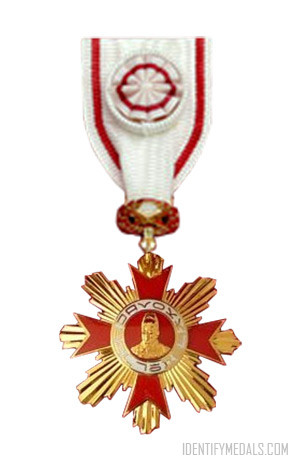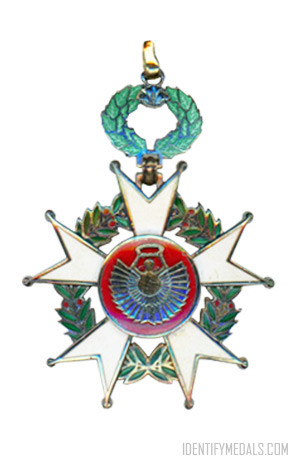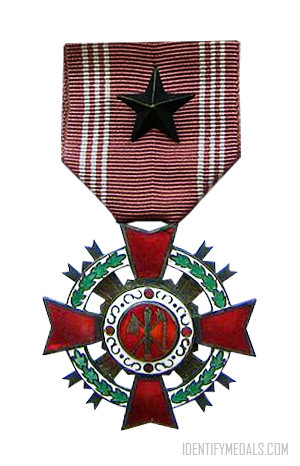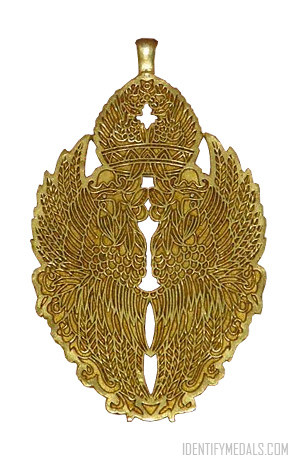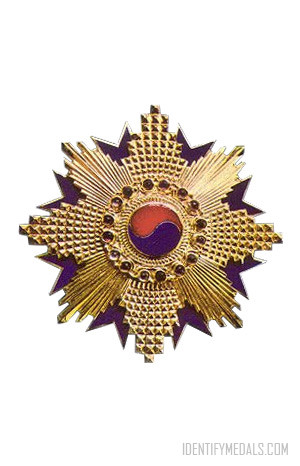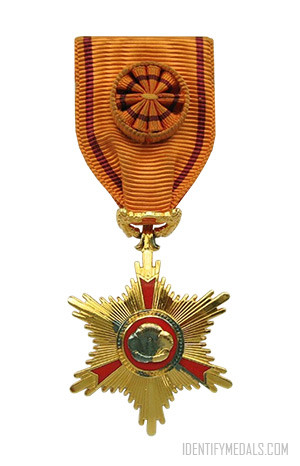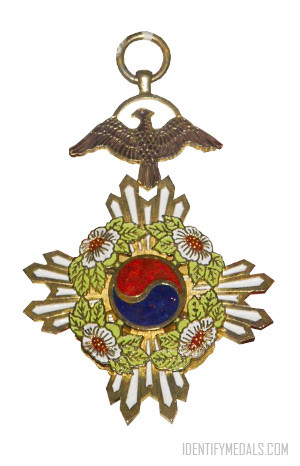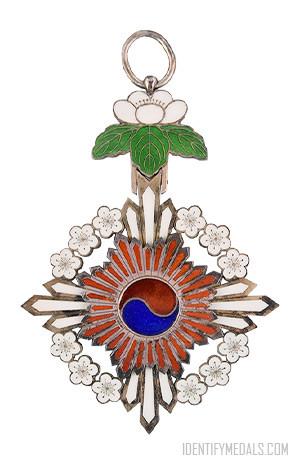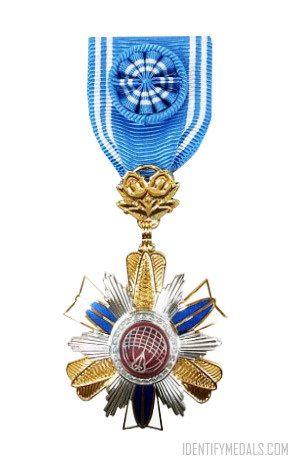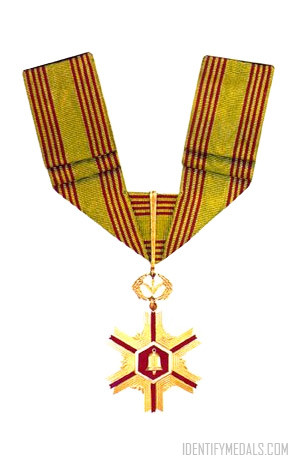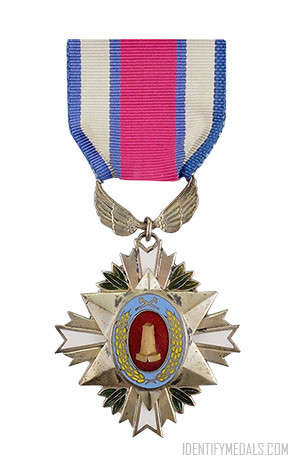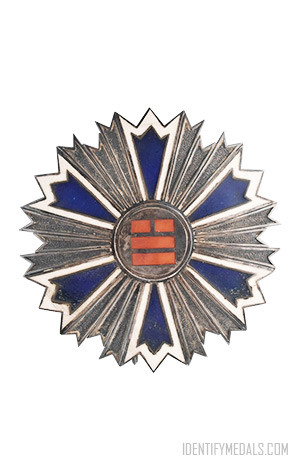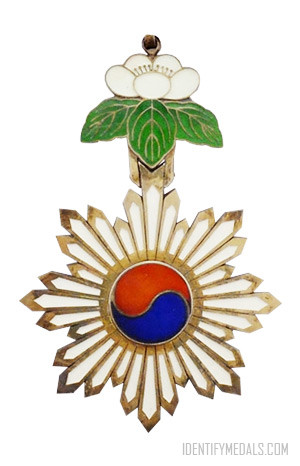- Time Period: Post-WW2
- Institution: 1974?
- Country: South Korea
The Order of Cultural Merit (문화훈장 in Korean) is one of South Korea’s orders of merit, awarded by the President of South Korea for “outstanding meritorious services in the fields of culture and art in the interest of promoting the national culture and national development.”
The Order of Cultural Merit was created after the Korean War broke out. The country only had two orders then: The Grand Order of Mugungha and the Order of National Foundation. While the first was awarded only to the President of the country, the second was destined for those that had fought against the Japanese occupation of Korea. However, in addition to the soldiers fighting the Korean War, there were also thousands of other foreigners that had come to the country’s aid. It became apparent that Korea needed an Order for civilians. The Order of Cultural Merit was created to award these people in recognition of their outstanding meritorious contributions.
The Order has been awarded to novelists, poets, composers, painters, sculptors, and dancers, among others.
Since 1973, the Order of Cultural Merit is conferred in five grades:
1st Class: Geum-gwan Medal (금관) or Gold Crown (also sized for women).
2nd Class: Eun-gwan Medal (은관) or Slver Crown.
3rd Class: Bo-gwan Medal (보관) or Precious Crown.
4th Class: Og-gwan medal (옥관) or Jeweled Crown.
5th Class: Hwa-gwan Medal (화관) or Flower Crown.
The Order of Cultural Merit Design
The insignia of the order is a cross decorated with red enamels. The ribbon is white with red and blue stripes depending on the class. There are different series for the Order of Cultural Merit.
The 1951 Series
The original Order of Cultural Merit was established in 1951 in three classes. All three classes have 40 x 47 mm breast ribbons. Because the colors of the ribbons were not specified in order, there have been observed medals with reversed patterns. The medal had three classes:
- 1st Class. Order of Cultural Merit – Republic of Korea Medal: With sunrays of different sizes symbolizing the historical development of cultural exchange with foreign countries. The mugunghwa in the center represents national prosperity, and the golden chain, cultural diplomacy. There are also wings of a dove for peace.
- 2nd Class. Order of Cultural Merit – Presidential Medal: The symbolism is similar to the 1st class, with the chain referring to cultural continuity from antiquity through present and future times.
- 3rd Class. Order of Cultural Merit – National Medal: The general design and symbolism are similar to the other classes, but there are only three rays. The chain in this case symbolizes the process of cultural cultivation.
The 1957 Series
The 1957 showed no physical changes to the pendants, but the ribbon was discussed in detail in a government-published booklet. For example, the symbolism of the orange, yellow and blue stripes.
The 1963 Series
A new Decree was issued in 1962, restricting some of the award’s criteria. The pendant for the 1st class was changed to a pendant suspended from a bow, the 2nd class suspended from a triangular or tri-fold ribbon, and the 3rd class a standard breast badge.
The 1967 Series
The Order does not exist as a series for 1967 because it became part of the Order of Civil Merit.
The 1973 Series
The Order of Cultural Merit was re-established in five classes in 1973, under the new Decorations Law – which turned into a sort of “Lifetime Achievement Award for the Arts”. The new classes follow the European usage of sashes, breast stars, etc. The 5th class, however, is a rosette on the ribbon.
The 1984 Series
The 1984 series follows the European usage too, with the addition of a ribbon bar for all classes and a lapel pin. Both follow the ribbon’s colors.

